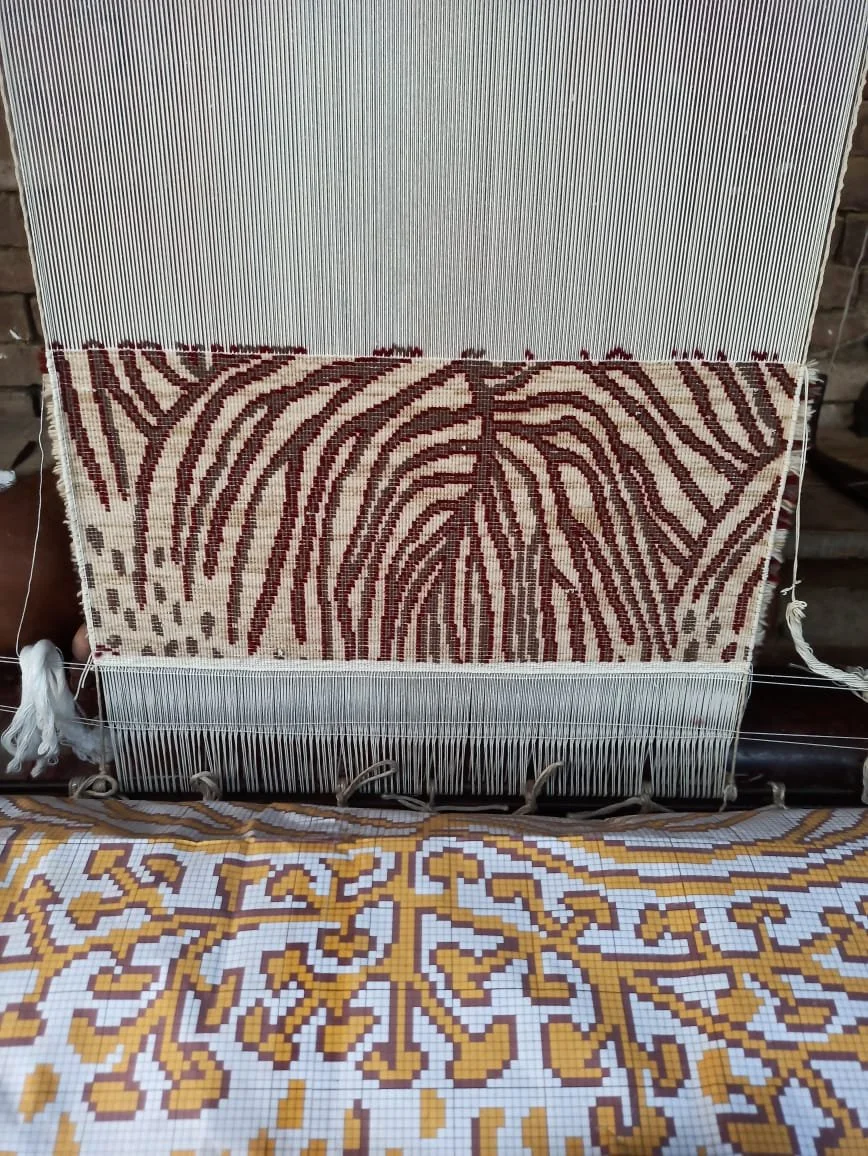Making of "Kings and Queens" hand-knotted rug designed by Reuben Paterson.
The process of hand knotting rugs goes back a few thousand years. Famous in Iran and the Middle East, hand knotted rugs are made by hand-tying millions of knots on vertical strings, called the warp, on a frame/foundation. Knots are tied in rows, and before and after each row, a horizontal string, called weft, is passed through the warp and beaten down to compact the rows and give the rug a tight structure. Due to its accessibility, softness and durability, wool is the most commonly used material in hand-knotted rugs with natural silk usually utilised in combination with wool to add depth and highlight certain areas of the design. It can take up to months or even years to complete a rug, depending on the knot density and type. A single hand-knotted rug takes about four to five months to make with multiple weavers working on a rug at a time.
The process:
After sourcing the finest quality wool and silk, the raw fibres are cleaned and sorted. Carding is where the fibres are straightened and teased into individual strands by hand ready for spinning. The carded fibres are then spun into yarn using a spinning wheel. Then, the Dye Master prepares the dyes to the right colour and the yarn is dyed by hand using traditional methods. The dyed yarn is allowed to dry naturally in the sun as it gives the yarn a special lustre and nuance to the colour. Once the yarns have dried, they’re wound into balls ready for the looms.
While the yarn is being prepared, pattern designers create a computer-generated graph from the original design. This acts as a rug map for the weavers. Hand-knotted rug weaving is carried out on a loom where every individual knot is weaved by hand, row after row. Once weaved, an initial hand carving of the rug details is made using scissors. The weaved rug is then cleaned several times on both sides to prepare it for finishing. Washing also helps soften the rugs, creating a luxurious feel. The washed rugs are then stretched out to dry and pinned to a frame to ensure they are the correct size. Any wrinkles to the rug are flattened out and the final drying creates deeper and clearer colours.
Hand knotted loom
The rug is laid flat and the pile height is evened out using large flat bladed shears. Then, clipping neatens out the design details by hand using scissors and any uneven threads are removed. The final stage is binding. The edges of the rug are neatly bound by hand using a needle and coordinating yarn that matches the design.
The end result is quality from every angle. Even the underside of the rug is a thing of beauty where you can see the individual knots and impeccable craftsmanship that has gone into making the designer rug.
